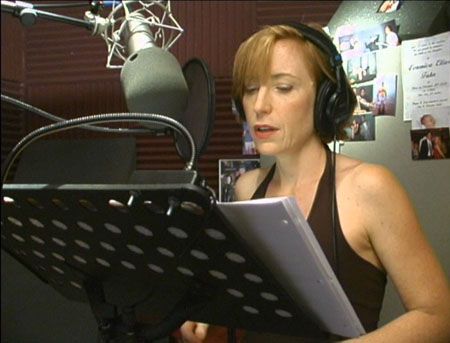
A Closer Look at How Voice Actors Bring Anime Characters to Life
Share
Anime is more than just stunning visuals and captivating stories. The voices behind the characters add a special dimension to every show, making heroes bold, villains intimidating, and moments unforgettable. But how exactly do voice actors breathe life into these animated figures? Let’s explore their craft and why their work is essential to the anime experience.

The Art of Voice Acting in Anime
Voice acting in anime goes beyond speaking lines. Actors must match emotions and tone to the drawn character’s expressions, movements, and personality traits. This requires a mix of acting skill and vocal control.
Anime often demands quick shifts in mood, from calm and reflective to explosive outbursts, requiring actors to be versatile. They must also adapt to different character types, whether it’s a shy schoolgirl, a heroic warrior, or an eccentric villain.
Matching the character’s mouth movements perfectly (lip-sync) is another challenge for dubbing actors. They often record in sync with the original animation to maintain authenticity.
Voice actors create a character’s voice that becomes iconic to fans. Their performance can turn a basic design into a deeply relatable persona, sparking emotional connections.
The Challenges Unique to Anime Voice Acting
Unlike live-action actors, voice actors rely solely on their voices to convey every nuance of the story. Here are some challenges they face:
- Expressing complex emotions without visuals: Since the audience only hears them, actors have to convey sadness, joy, fear, and anger purely through voice.
- Maintaining consistency: Characters often appear across many episodes or even spin-offs. Keeping the voice consistent while evolving the character is essential.
- Cultural nuance: Anime sometimes includes cultural references, speech styles, and idioms specific to Japan. Voice actors must convey these authentically or adapt them naturally for foreign audiences.
- High volume of work: Anime is fast-paced, and voice actors may record multiple roles or episodes in a short span, requiring endurance and focus.
How Voice Actors Develop Their Character Voices
Building a unique voice for an anime character often starts with understanding the character’s background and personality. The process might look like this:
- Script study: Actors read the script carefully, noting the character’s mood, motivations, and relationship with others.
- Voice exploration: They experiment with pitch, tone, and rhythms to find a voice that fits.
- Director collaboration: Voice directors guide the actor on style and delivery, offering feedback to match the intended character portrayal.
- Practice and refinement: Actors refine the voice to balance originality and consistency, ensuring it works for long-term scenes.
This careful crafting creates memorable voices that stick with viewers long after watching. For example, one of the voices praised for its depth is Marina Inoue, known for giving life to characters like Iku Kasahara in Library War (source).
Trends Shaping Voice Acting in Anime Today
Voice acting has evolved significantly. Recent trends include:
- Remote recording: Many actors now record from home studios, making it easier to work from anywhere and collaborate globally.
- AI voice tools: Though still emerging, AI voices influence the industry, pushing actors to offer more authentic human qualities space technology can’t match.
- Diverse roles: Voice actors often play multiple roles across genres, sharpening their versatility.
- Social media presence: Actors build personal brands, connecting with fans beyond voice roles.
- Training and workshops: More actors seek training focused on emotional delivery, dialects, and genre-specific skills to stay competitive (source).
Why Voice Actors Matter for Anime Fans
The voice behind an anime character often becomes an inseparable part of how fans remember the series. The right voice can evoke laughter, tears, or excitement. Without it, even the best animation might feel hollow.
Voice actors turn words on a page into living, breathing characters. They add personality and impact to fight scenes, heartfelt moments, and even comedic relief. Their work helps stories feel deeper and more immersive.
For fans curious about the vocal art, this article on bringing characters to life offers insight into the magic vocal talent brings to animation.

How Voice Actors Influence Anime Merchandise and Culture
The voice actors themselves often become celebrities in the anime community. Their performances lead to live events, conventions, and merchandise like autograph cards and DVDs featuring their work.
Fans follow voice actors closely and celebrate their contributions through fan art, voice acting parodies, and cosplay. This connection adds another layer to the anime experience.
On the topic of merchandise, exploring manga collections related to popular series can deepen your appreciation for both the characters and the voices behind them.
Conclusion
Voice actors do more than just speak lines in a booth. They shape the soul of anime characters and deepen the emotional punch of storytelling. Their craft demands skill, emotion, and stamina, all of which contribute to the unforgettable experiences anime fans cherish.
Whether it’s the fiery passion of a protagonist or the subtle hint of sadness in a supporting role, voice actors transform drawings into characters that stay with us long after the credits roll. Their voices are the heartbeats of anime worlds.
